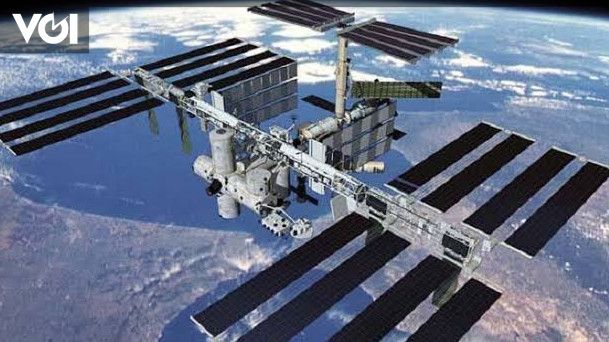JAKARTA – The International Space Station (ISS) can now be directly connected by teams on Earth, thanks to satellites Space Data Highway (SDH) by Airbus, an aerospace company and backed by European Space Agency (THAT).
SDH itself provides connectivity services broadband between the ISS and Earth. Airbus said the SDH service represented a major change in the speed of space communications, using laser technology and satellites in geostationary Earth orbit to provide a unique and secure data transfer service in real time.
The Columbus Ka-band (ColKa) terminal has been fully installed and tested aboard the ISS, and the SDH satellite will begin relaying data over a bidirectional link real time between the ISS Columbus Laboratory and the Columbus Control Center located in the German Aerospace Center, near Munich, as well as research centers throughout Europe.
SDH services using laser communication infrastructure European Data Relay System (EDRS) owned and operated by Airbus to provide capabilities bandwidth high on low Earth orbit satellites (LEO) and aerial platforms.
Quoting ComputerWeekly, Tuesday, January 18, SDH is designed to allow users to transfer data, such as imagery, video, and sound from LEO satellites and aerial platforms via EDRS-A and EDRS-C geostationary satellite laser communications to receiving Earth stations in Europe.
The platform also supports high volume data transfer from Earth observation satellites, aerial platforms and other users at a data rate of 1.8Gbps, with transmission volumes up to 40TB per day.
As the world’s first laser communication geostationary constellation, the system has achieved more than 50,000 successful laser connections in the first five years of routine operation. Its satellites can connect to the ISS as well as low-orbit observation satellites at distances of up to 45,000 km.
From its position in geostationary orbit, the SDH system real-time relaying the collected data to Earth, this usually takes several hours. This could allow the amount of image and video data transmitted by observation satellites to be greatly increased and their mission plans to be reprogrammed at any time and in just a few minutes.
Not only that, SDH can also carry out military communications, intelligence, surveillance and reconnaissance (ISR), open sea surveillance, environmental and climate change monitoring and emergency response.
As the SDH and ColKa terminals, ESA will benefit from direct and sovereign access to the ISS, this will increase operational flexibility and allow more astronauts, scientists and researchers to benefit from direct links with Europe. It will also allow ESA to create slots for ad-hoc experiment access and interaction with European astronauts.
– .

